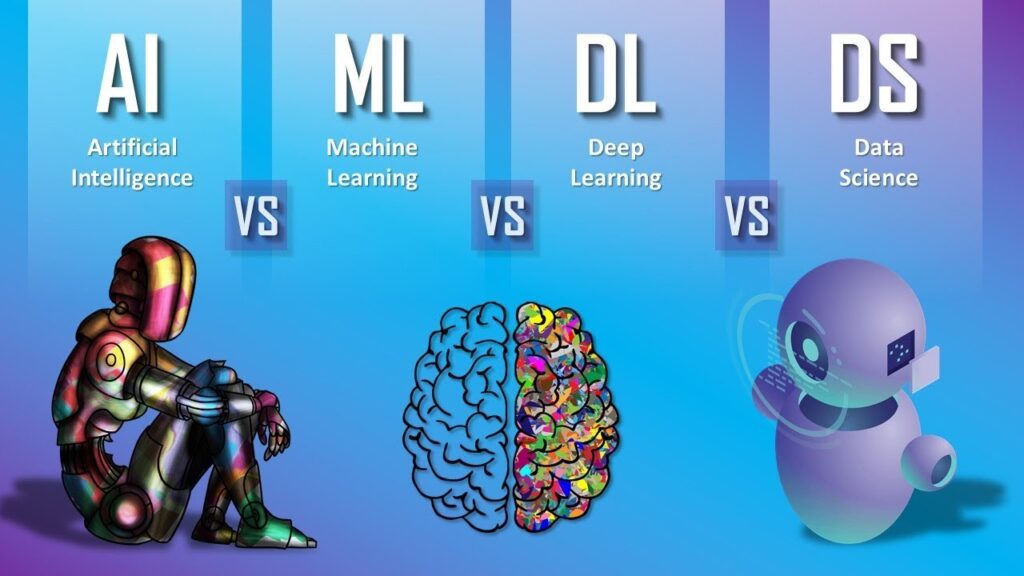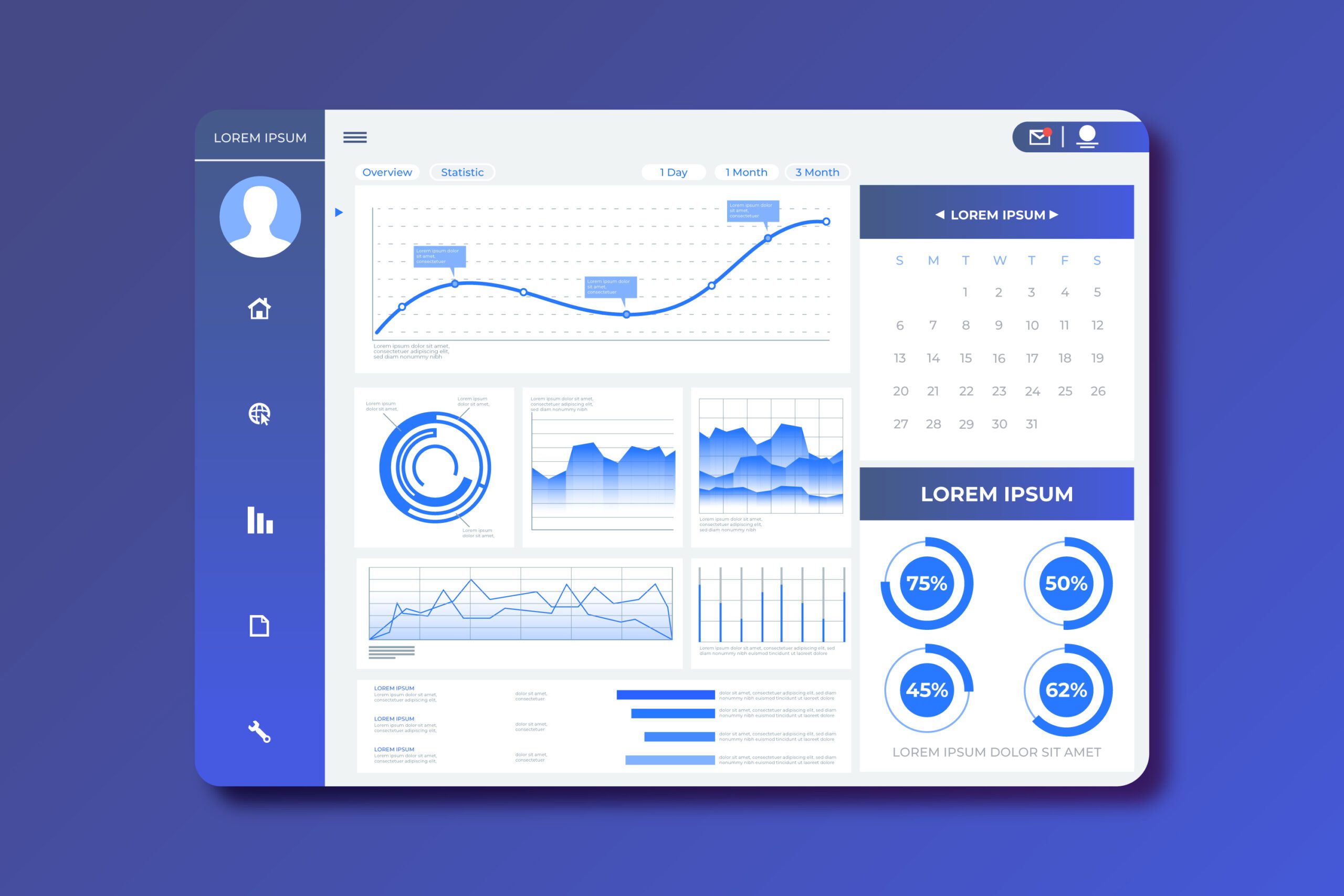AI (Artificial Intelligence) creates intelligent systems that mimic human decision-making. ML (Machine Learning), a subset of AI, allows machines to learn from data, while DL (Deep Learning), a subset of ML, uses neural networks to model complex patterns.
DS (Data Science) involves extracting insights from structured and unstructured data using various techniques. AI, ML, DL, and DS are interconnected yet distinct fields. AI aims to create intelligent systems capable of performing tasks that typically require human intelligence. ML, a subset of AI, focuses on developing algorithms that allow computers to learn from and make predictions based on data.
DL, a further subset of ML, uses deep neural networks to analyze large datasets, enabling the machine to perform complex tasks such as image and speech recognition. DS, on the other hand, is an interdisciplinary field that involves collecting, processing, and analyzing data to extract meaningful insights and solve problems. Understanding these differences is crucial for leveraging their capabilities effectively in various applications.
The Essence Of Artificial Intelligence (ai)
Artificial Intelligence, or AI, aims to create machines that can think and act like humans. These systems can perform tasks that usually require human intelligence. These tasks include recognizing speech, understanding language, and making decisions. AI uses algorithms and data to learn and improve over time. The goal is to make machines that can solve problems and adapt to new situations.
AI is used in many everyday applications. Chatbots and voice assistants like Siri and Alexa are popular examples. They help answer questions and perform tasks using voice commands. Recommendation systems like those on Netflix and Spotify suggest movies and songs based on user preferences. Facial recognition technology is another example, used in security and photo tagging.
Machine Learning (ml) As A Subset Of Ai
Machine Learning (ML) involves training algorithms to learn from data. It uses this data to make predictions. Algorithms identify patterns and improve over time. This process is known as learning from data.
Key techniques in ML include supervised learning, unsupervised learning, and reinforcement learning. Supervised learning uses labeled data for training. Unsupervised learning finds hidden patterns in unlabeled data. Reinforcement learning involves learning from rewards and penalties.
Deep Learning (dl) – The In-depth Approach
Neural networks are the backbone of deep learning. They mimic the human brain’s way of processing information. Each “neuron” processes input data and passes it to the next layer. The network learns by adjusting connections based on errors. This process is called backpropagation. Deep learning models can handle large amounts of unstructured data. They excel in tasks like image and speech recognition.
Machine Learning relies on statistical models and algorithms. Deep Learning, on the other hand, uses neural networks. Traditional ML methods need feature extraction. DL models learn features automatically from raw data. ML is ideal for simpler tasks with structured data. DL shines in complex tasks with unstructured data. Both methods aim to make accurate predictions.
Data Science (ds) – The Analytical Backbone
Data Science collects, analyzes, and interprets data to gain insights. This field uses statistical techniques and algorithms. These methods help uncover patterns and trends. Data Scientists work with both structured and unstructured data. They transform raw data into meaningful information. The goal is to make data-driven decisions. This process helps businesses optimize performance. It also aids in predicting future trends.
Various tools and processes are essential in Data Science. Popular tools include Python, R, and SQL. These tools help in data manipulation and analysis. Data visualization tools like Tableau and Power BI are also important. They make complex data easy to understand. The process involves data cleaning, integration, and transformation. Machine Learning models are often used for predictions. Data Scientists also use statistical methods to validate results.
Ai And Ds: A Comparative Perspective
AI focuses on creating systems that can make decisions like humans. These systems often use logic and decision trees. On the other hand, Data Science (DS) is all about analyzing data to gain insights. Data scientists use various techniques to understand data patterns and trends.
AI makes smart decisions based on data inputs. DS provides the data needed for these decisions. AI uses algorithms to predict future events. DS uses statistical methods to interpret data. Together, they form a powerful combination for solving problems.
While AI focuses on decision-making, DS excels at data analysis. Both fields overlap in their use of data. AI systems need data to function effectively. DS provides this crucial data. Their paths intersect in various applications like predictive analytics and automated decision-making.

Credit: www.linkedin.com
Real-world Applications Of Ai, Ml, Dl, And Ds
AI helps in healthcare by diagnosing diseases faster. Machine Learning improves customer experiences in retail. Deep Learning powers self-driving cars in the automotive industry. Data Science helps in finance by predicting stock market trends.
AI automates repetitive tasks, saving time and money. Machine Learning personalizes marketing strategies for better customer engagement. Deep Learning analyzes large datasets for deeper insights. Data Science helps businesses make data-driven decisions.
Challenges And Ethical Considerations
Bias in AI and ML systems is a major issue. These systems can reflect human prejudices. Fairness must be ensured in algorithm design. Regular audits are necessary to detect and fix bias. Diverse data sets can help reduce bias. Ethical guidelines should guide development processes. Involving ethics experts can be beneficial.
Data privacy is critical in AI and ML projects. Personal data must be protected from misuse. Strong encryption methods should be used. Security breaches can lead to serious consequences. Regular security audits are essential. Data anonymization techniques can help protect user identity. Compliance with privacy laws is mandatory.

Credit: www.linkedin.com
The Future Landscape Of Ai, Ml, Dl, And Ds
Artificial Intelligence (AI) is growing fast. Machines are becoming smarter. They can make decisions like humans. Machine Learning (ML) is part of AI. It allows machines to learn from data. Deep Learning (DL) is a part of ML. It uses neural networks to understand data. Data Science (DS) helps in collecting and analyzing data.
AI will change how we live. Smart robots may help us daily. ML will make systems smarter. DL will help in understanding big data. DS will provide important insights.
AI can make jobs easier. It can also create new jobs. ML can improve health care. It can find diseases early. DL can help in understanding complex problems. DS can help companies make better decisions.
There are some concerns too. AI may take some jobs. Privacy can be an issue. We need to use these technologies wisely. They can make our world better if used right.

Credit: medium.com
Frequently Asked Questions
What Is The Difference Between Ai And Ml And Deep Learning And Data Science?
AI creates intelligent systems. ML, a subset of AI, enables machines to learn from data. Deep learning, a subset of ML, uses neural networks. Data science focuses on analyzing and interpreting data.
What Is Ai Ds And Ml?
AI (Artificial Intelligence) creates intelligent systems. DS (Data Science) analyzes data for insights. ML (Machine Learning) enables machines to learn from data.
What Is The Difference Between Machine Learning Ml And Deep Learning Dl )?
Machine learning (ML) uses algorithms to learn from data and make predictions. Deep learning (DL) uses neural networks to model complex patterns and processes unstructured data. ML is suitable for simpler, well-defined tasks with structured data, while DL handles more complex tasks with unstructured data.
Conclusion
Understanding the differences between AI, ML, DL, and DS is crucial for navigating the tech landscape. Each field has its unique applications and contributions. AI aims to create intelligent systems, ML focuses on learning from data, DL handles complex data with neural networks, and DS extracts valuable insights.
Grasp these distinctions to leverage technology effectively.







